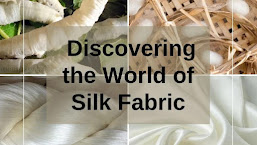Imprinting on greige texture is an essential move toward material assembling, where multifaceted plans and examples are moved onto the crude, incomplete texture. Notwithstanding, to guarantee the life span and sturdiness of these prints, appropriate intensity setting procedures are fundamental. In this exhaustive aide, we dig into the complexities of intensity setting subsequent to imprinting on greige texture, investigating its significance, strategies, and best practices.
Understanding Intensity/Heat Setting
Heat setting is a basic cycle in material getting done, where intensity is applied to the texture to balance out the printed plans and improve variety quickness. It includes exposing the texture to a particular temperature for a set term to guarantee that the shades or colors utilized in printing stick immovably to the texture strands.
Significance of Intensity/Heat Setting
Further develops Wash Quickness: Intensity setting assists with further developing the wash speed of printed plans, keeping them from blurring or washing off rashly during washing.
Upgrades Solidness: By holding the colors or colors to the texture strands, heat setting expands the strength and life span of the printed plans, guaranteeing they endure rehashed wear and washing.
Sets the Texture Construction: Intensity setting likewise assumes a part in setting the texture structure, limiting shrinkage and twisting while at the same time working on layered security.
Factors Affecting Intensity Setting
Texture Type: Different texture types require shifting intensity setting temperatures and terms. Factors like fiber arrangement, weave, and weight impact the intensity setting process.
Printing Method: The printing strategy utilized, whether it's screen printing, advanced printing, or revolving printing, can influence the intensity setting prerequisites.
Kind of Ink or Color: The sort of ink or color utilized in the printing system influences the intensity setting boundaries. Water-based, shade, and responsive colors might require different intensity setting conditions.
Heat Setting Strategies
Dry Intensity Setting: In dry intensity setting, the texture is exposed to hot air in a chamber or through a transport dryer. This strategy is reasonable for textures with heat-touchy strands and takes into consideration exact temperature control.
Wet Intensity Setting: Wet intensity setting includes steaming or heating up the texture to set the printed plans. It is normally utilized for textures with regular strands like cotton and cloth, as well as receptive colors.
Squeezing or Pressing: For more limited size tasks or confined heat setting, squeezing or pressing the printed texture can be compelling. This technique is reasonable for spot medicines or final details however may not be appropriate for huge scope creation.
Ceaseless Intensity Setting: In persistent intensity setting, the texture goes through a progression of warmed rollers or chambers at controlled temperatures and paces. This technique is great for high-volume creation and guarantees uniform intensity dissemination across the texture.
Best Practices for Intensity Setting
Follow Maker's Proposals: Consistently allude to the producer's directions for the particular ink or color utilized in the printing system. They give important direction on the suggested heat setting temperature, span, and tension.
Perform Trials: Before full-scale creation, lead trials to decide the ideal intensity setting boundaries for your texture and printing strategy. This assists with staying away from exorbitant errors and guarantees predictable outcomes.
Guarantee Even Intensity Conveyance: Whether utilizing dry or wet intensity setting strategies, guarantee that intensity is uniformly appropriated across the texture to forestall lopsided restoring of the printed plans.
Screen Temperature and Time: Utilize exact temperature checking gear and clocks to keep up with exact command over the intensity setting process. Abstain from overheating, as it can harm the texture or cause variety movement.
Permit Adequate Cooling Time: After heat setting, permit the texture to cool totally before additional handling or bundling. This assists with balancing out the printed plans and forestalls smearing or twisting.
Conclusion
Heat setting is a basic move toward the printing system for greige texture, guaranteeing that the printed plans stay lively, solid, and wash-quick. By understanding the significance of intensity setting, utilizing reasonable strategies, and sticking to best practices, material producers can accomplish predictable and great outcomes in their printed textures. Dominating intensity setting procedures is fundamental for keeping up with the honesty and worth of printed materials in the present cutthroat market.

.jpg)
.jpg)
.jpg)
.jpg)
.jpg)
0 Comments